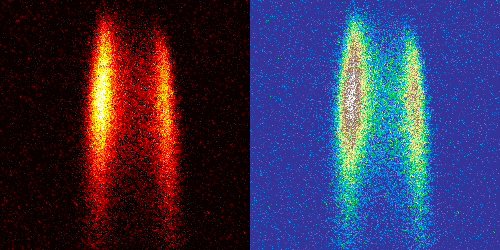Phys.org July 22, 2020
Physicists theorize that wave-particle duality is a fundamental feature of the universe. This suggests that all matter should have wave-like phenomena, that is, it should be able to behave similar to light and electrons. An international team of researchers (Austria, Germany) created a Bragg grating using standing light waves generated by retroreflecting a green laser from a mirror. In two separate experiments, they sent beams of the antibiotic ciprofloxacin and the dye phthalocyanine through this grating. Both experiments produced diffraction patterns with two peaks, corresponding to groups of molecules with a large momentum difference between them. Despite the molecules’ complex structures and vibrations, the team found that they could replicate the diffraction patterns using a model that treated the molecules as polarizable point particles…read more. TECHNICAL ARTICLE

Researchers create diffraction patterns using beams made of large organic molecules, a first step toward creating an interferometer for these systems. Credit: Phys. Rev. Lett. 125, 033604, July 16, 2020.